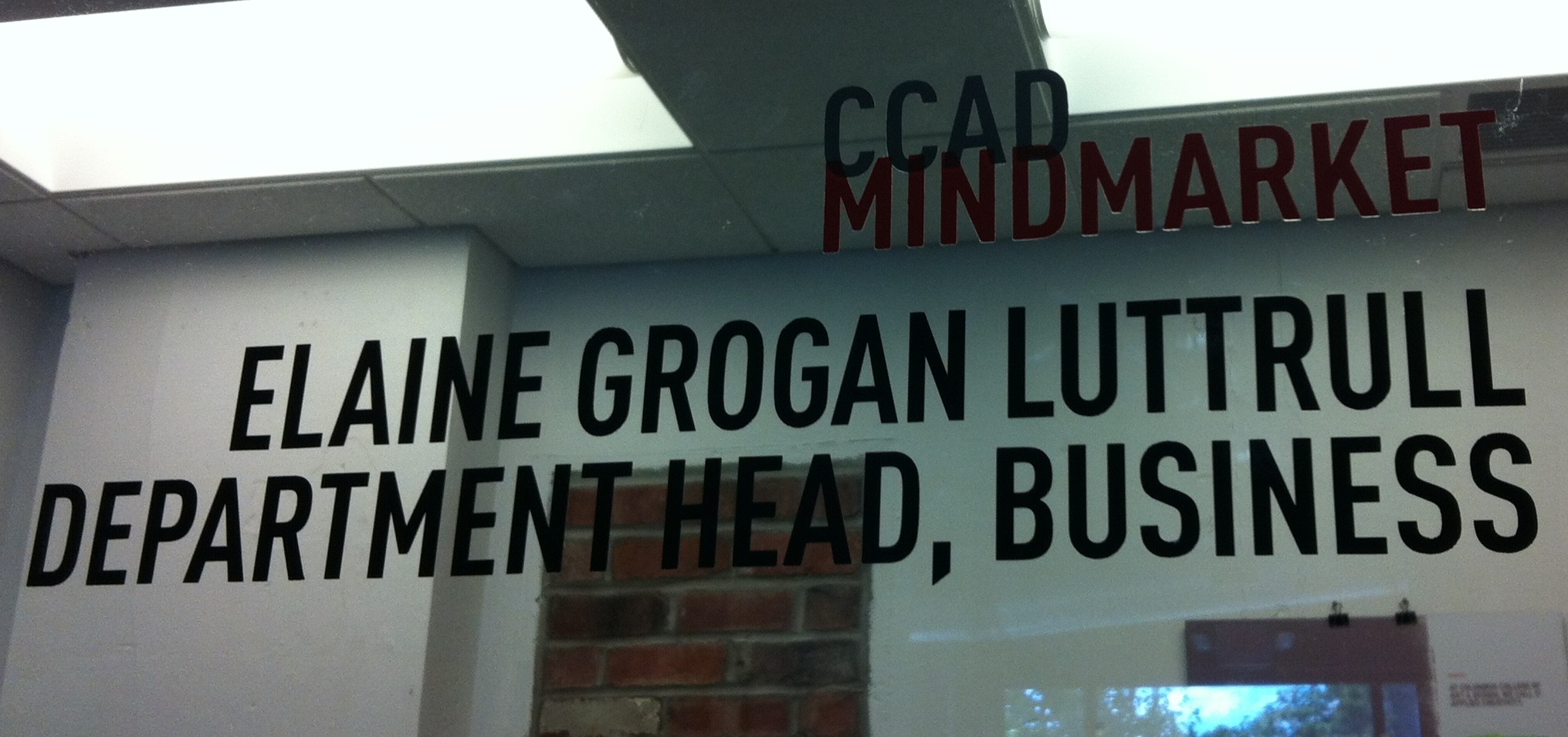July 21, 2014 • Curriculum
 One of my favorite non-profit colleagues hosts a New Year’s Eve party on June 30 every year. Since July 1 is the first day of many fiscal years in not-for-profit world, the party makes complete sense. It is a delightful way to celebrate the close of one year and the start of another.
One of my favorite non-profit colleagues hosts a New Year’s Eve party on June 30 every year. Since July 1 is the first day of many fiscal years in not-for-profit world, the party makes complete sense. It is a delightful way to celebrate the close of one year and the start of another.
July 1 of this year was the start of CCAD’s fiscal year, and of course the start of something new for me. Effective July 1, I became a full-time visiting faculty member at CCAD and the Department Head for the Business and Entrepreneurship department. July 1 was also the official beginning of the Business Minor at CCAD, which received accreditation for this fiscal year, and it is the start of a new imagining of the strategic direction of the business department. (You know, now that we have an official business department.)
I couldn’t be more thrilled about the synergy and overlap between my work with CCAD and my work with Minerva Financial Arts. My work with individual artists and arts organizations informs my lectures in the classrooms at CCAD, and my curricular work informs the structure of my work with clients. (But don’t tell them.)
In my role with CCAD, I’ll continue to teach two classes, and I’ll be charged with providing a bit of strategic direction to the business curriculum. Currently, CCAD offers five business classes, and my goal is to focus the content of each course so that every student leaves CCAD with a bit of business literacy, and the most ambitious ones have unlimited freedom to explore more complicated contemporary business topics for artists and designers. We’re also dreaming up new and interesting ways to incorporate some aspects of the business curriculum into the artistic areas of practice for our students.
For example, the senior designers in the Fashion Department produce an incredible fashion show each spring. (You may have seen it. It’s amazing.) Prior to the debut of each student’s collection in 2014, I hosted a pricing workshop. This workshop was part of their studio time and twenty-two budding designers attended between tailoring appointments, tweaks to their notions, and management of their models.
To begin the workshop, I asked each designer to price one garment from his or her collection. The median price was $225.00. Then the designers worked through a series of pricing exercises, learned a bit more about the factors that contribute to setting a price (not all of them economic), and practiced explaining the rationale for those prices.
By the conclusion of the workshop, the median price of the garments was $425.00. That’s an 88.9% increase in the median prices set by incredibly talented young designers.
The quality of the work didn’t change during my workshop. The level of talent didn’t change. The garments themselves didn’t change. The designers didn’t collude to trick the market. No one established a monopoly. No major world events changed the industry outlook during our three hours.
They simply built their knowledge and confidence around a relevant financial topic: the price of a garment.
As part of my new role, I want to build more examples of these types of relevant educational experiences for the artists and designers that graduate from CCAD. I want their confidence in their financial, business, marketing, management, and legal knowledge to be as strong as their confidence in their work.
From a technical and artistic perspective, our students rule the world. My job is to help them rule the business world too.
And that is truly the most exciting new role of all. Happy New Year!


